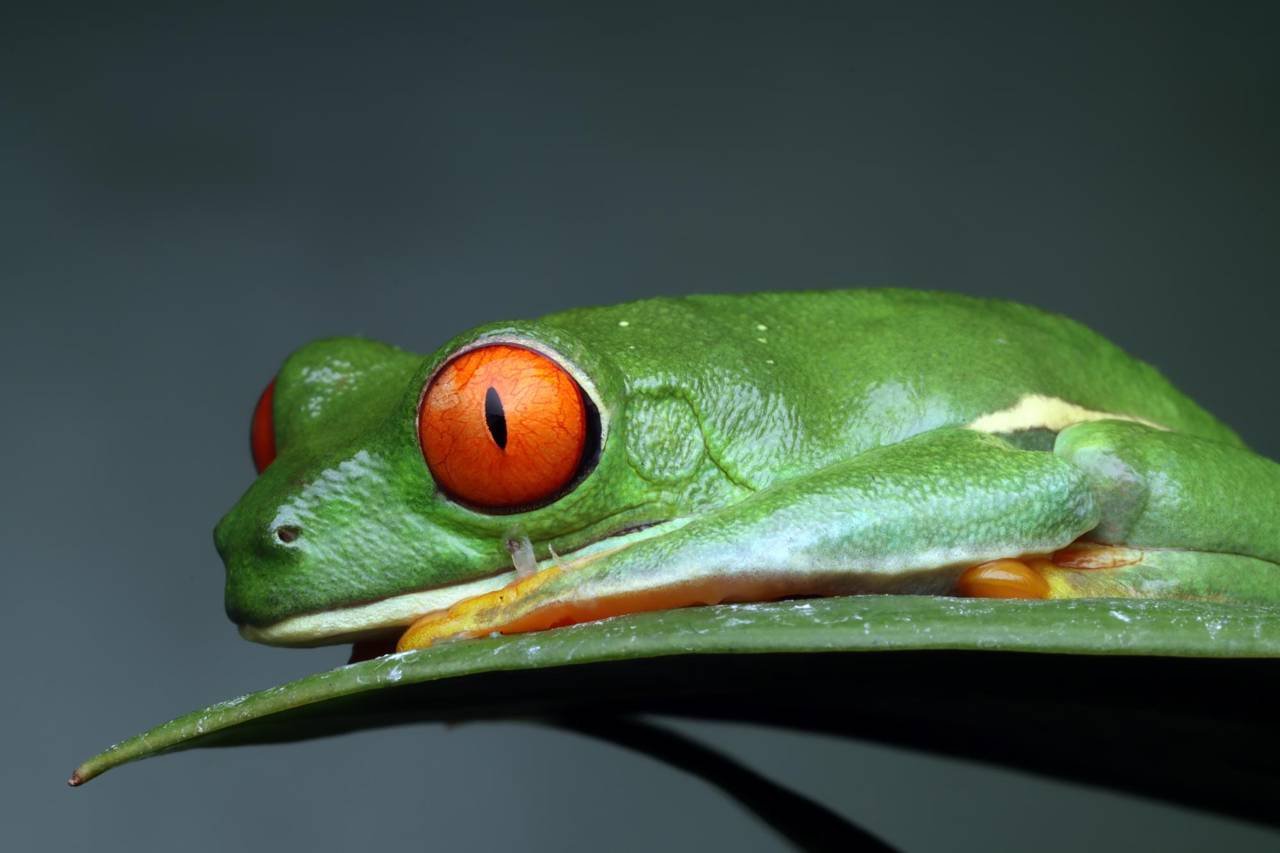Frog eyes are among the most fascinating adaptations in the animal kingdom. These remarkable organs offer frogs superior vision both in water and on land, enabling them to hunt, evade predators, and navigate their environments effectively. Let’s explore how frog eyes work and what makes them so uniquely suited to their amphibious lifestyle.
Anatomy of Frog Eyes
Frog eyes are characteristically large relative to their body size, providing an expansive field of vision. Positioned on either side of the head, frog eyes offer a wide perspective, which is crucial for spotting predators and prey. This lateral placement permits nearly a 360-degree view, allowing frogs to respond quickly to changes in their surroundings.
Adaptations for Aquatic and Terrestrial Vision
Bifocal Ability
Frogs are equipped with the ability to adjust their vision between water and air. Their eyes can focus both mediums—water, which refracts light differently than air, and the open atmosphere—thanks to specialized lens structures. This adaptability is paramount for frogs that move between aquatic and terrestrial habitats.
Nictitating Membrane
A key feature of frog eyes is the nictitating membrane, a translucent third eyelid that protects the eyes underwater without obstructing vision. This membrane offers frogs an advantage while submerged, filtering debris and maintaining moisture.
Sensitivity to Movement
Frog eyesight is particularly adept at detecting motion. This sensitivity stems from their evolutionary need to capture quick and agile prey like insects. Frogs’ eyes can rapidly detect and track movement, aiding in successful hunting endeavors.
Color Vision and Night Sight
Frogs possess color vision, which assists them in distinguishing between objects and their environments. Some species have the ability to see UV light, enhancing their ability to hunt and evade during dawn or dusk. Moreover, their vision adapts well to low-light conditions, making them efficient nocturnal hunters.
The Colors of Frog Eyes
Frog eyes are as varied as the species themselves, with a range of colors that add to their adaptability and allure. The iris of a frog’s eye can be green, brown, golden, or even bright red or orange, depending on the species. These colors are not just for beauty—they play functional roles too:
- Camouflage: Certain iris colors help frogs blend into their environment more effectively, offering protection against predators.
- Communication and Mating: Brightly colored eyes may be used to attract mates or ward off rivals during mating seasons, playing a crucial role in frog communication.
- Adaptations: The variation in eye color can also be linked to specific adaptations that enhance survival in diverse habitats, contributing to species-specific advantages in visual perception.
The colors of a frog’s eyes are a vital part of its survival strategy, aiding in everything from predator evasion to successful breeding.
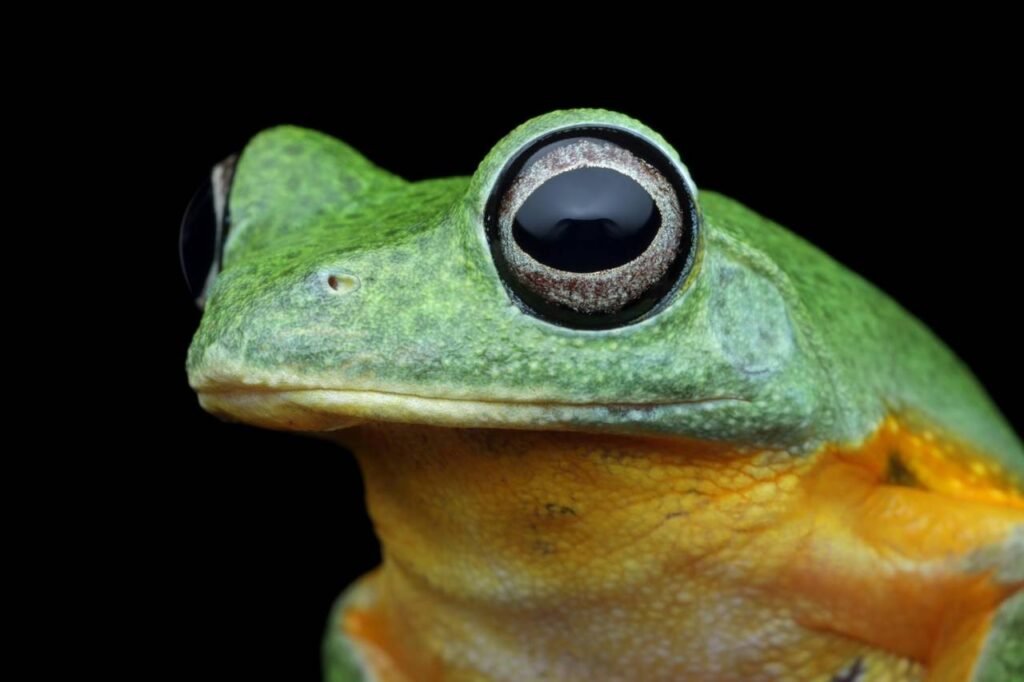

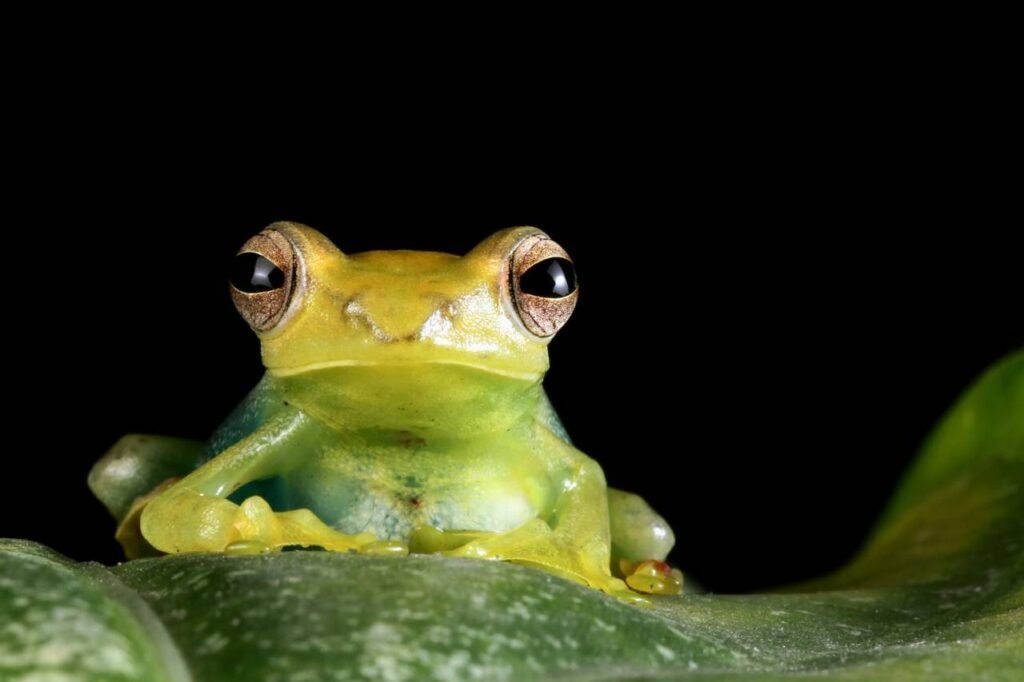
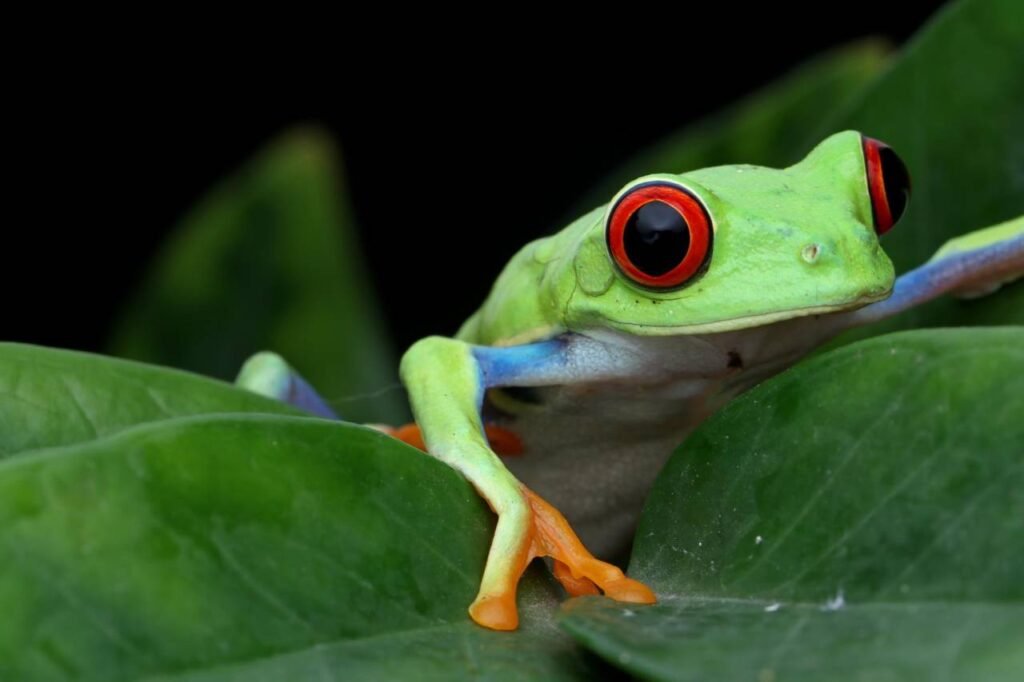
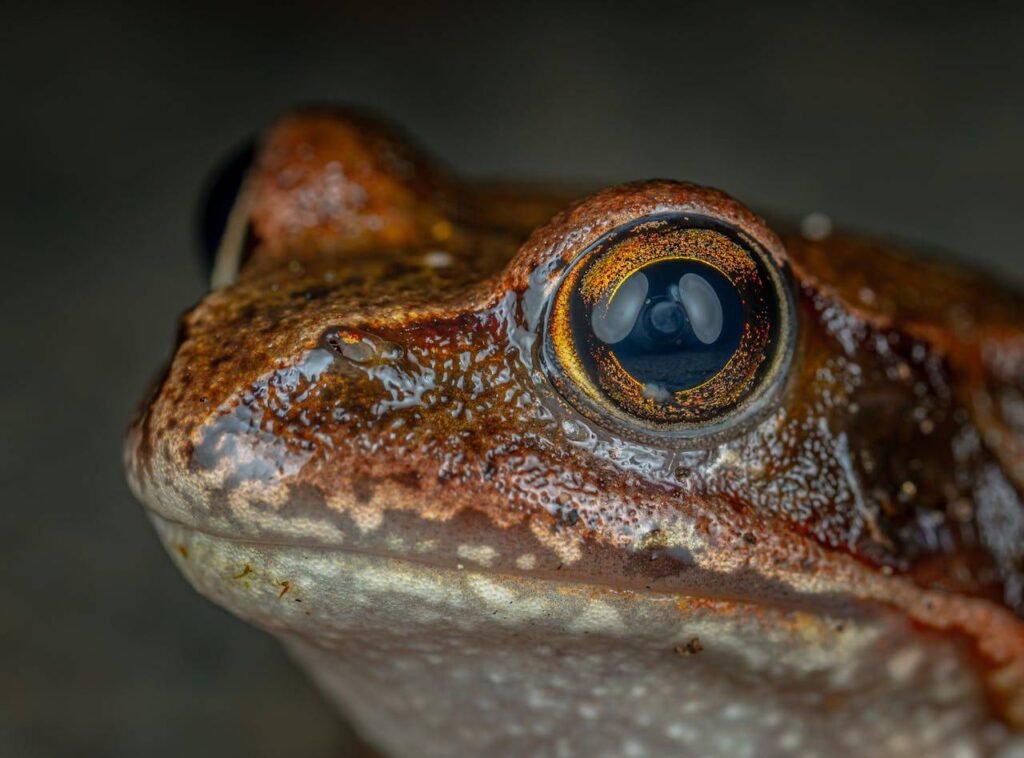
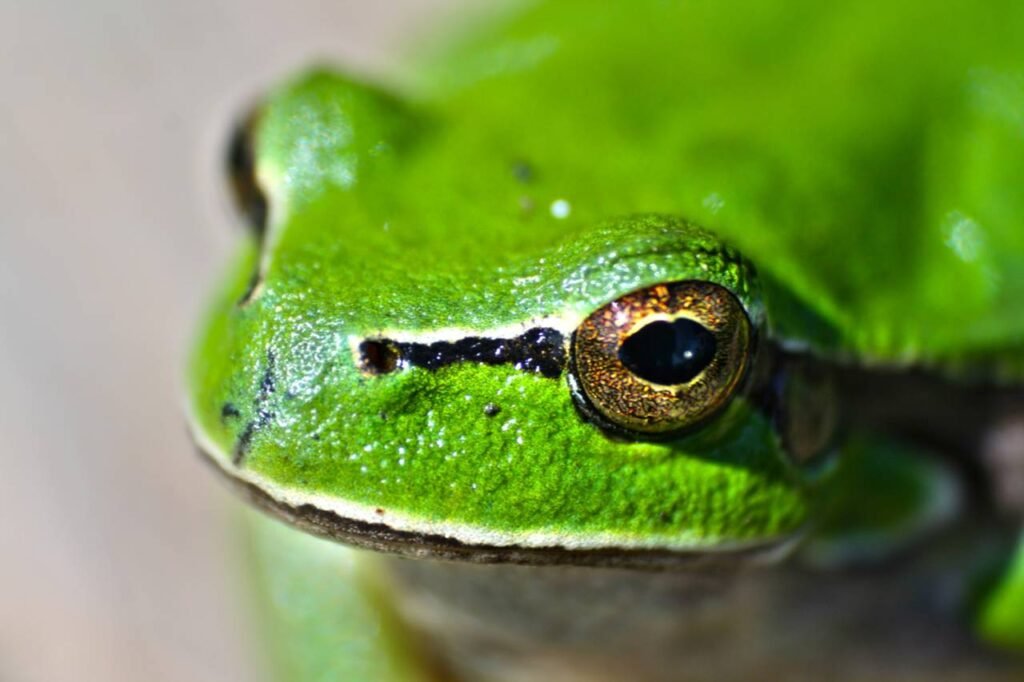
Ecological Importance
The superior vision provided by their unique eye structure enhances frogs’ roles as crucial ecosystem regulators. As both predators and prey, frogs maintain the delicate balance within their habitats, controlling insect populations while providing sustenance for larger animals.
Conservation Considerations
Preserving the natural environments that frogs depend on is critical. Changes to aquatic habitats, such as pollution or wetland destruction, can significantly impact frog populations. Conservation efforts help maintain the ecosystems that sustain these amphibious experts.
FAQs About Frog Eyes
How do frog eyes adapt to different environments?
Frog eyes adapt through specialized lens structures that allow them to focus in both water and air, and through the protection of the nictitating membrane.
Can frogs see in the dark?
Yes, frogs have excellent night vision and can often see in low-light conditions, making them effective nocturnal hunters.
What is the purpose of a frog’s nictitating membrane?
The nictitating membrane serves as a protective layer that keeps frog eyes clean and moist, especially underwater, without limiting visibility.
How does motion detection benefit frogs?
Motion detection allows frogs to efficiently spot moving prey and avoid predators, crucial for their survival both in water and on land.
Why is frog eye health important for ecosystems?
Healthy frog populations, supported by their superior vision, contribute to ecosystem balance by controlling insect populations and serving as prey for larger animals.
Why do frog eyes come in different colors?
Frog eye colors vary to provide camouflage, assist in mating communication, and offer visual adaptations suited to diverse environments.
Do the colors of a frog’s eyes affect its vision?
While the colors themselves don’t directly impact vision, they can be related to adaptations that enhance survival, such as UV light detection in some species.

